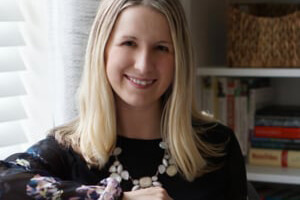Takeaway
What does it mean to co-construct a plan of care with disabled patients? Their desires may not be what you expect.

Lifelong Learning in Clinical Excellence | December 19, 2022 | 2 min read
By Kerry Devlin, MMT, LPMT, MT-BC (she/her), Johns Hopkins Medicine
We’re re-featuring this piece today in recognition of Disability Pride Month 2024.
I shifted my weight uncomfortably on the exam table and shuffled my stack of imaging reports. “Are you sure additional testing isn’t warranted?” I asked the specialist I’d waited six months to meet. “These symptoms interfere with my work, and medication hasn’t touched the pain.” Fluorescent lights and rage blurred my vision when the specialist responded, “I think a psych referral is most relevant for you, as there’s no clear etiology for your pain presentation,” they said without looking away from their computer screen.
It’s happening again–they think I’m making it up. Months later, another specialist reviewed the same images, diagnosed me, and recommended surgery within moments of meeting me. If accessing medical care can be that “easy,” why did it take so long and feel so hard?
It’s a visceral and vulnerable experience to offer your body up for examination, no matter how many times you do it. During medical appointments, my body often feels like an object, rather than the home I have the honor (and sometimes, the challenge) of existing in. As someone who’s a disabled person all the time, and a healthcare professional part of the time, this duality is constant.
Though one in four adults in the US have a disability, disabled patients still have complex relationships with medicine. For those experiencing intersectional oppression like ableism, racism, heteronormativity, gendered oppression, and capitalism, accessing healthcare is an intrinsically unsafe experience. Many clinicians misunderstand the lived experience of disability, holding harmful assumptions that disabled folx have worse quality of life based on disability alone. Some clinicians even report discharging or refusing care outright for disabled patients, reinforcing the power they hold when it comes to providing–or gatekeeping–access to life-saving medication, testing, and care.
Being disabled in America is a both/and experience; patients can seek out medical supports to be in the world comfortably while simultaneously rejecting cure-based treatments to cherish the parts of ourselves that cannot–and should not–be changed. Given this, how might clinicians better affirm the lived experiences and desires of disabled patients?
Some starting points:
1. Honor lived experience as expertise.
Sit with and affirm patients. What if care plans emerged in response to what patients say they want and need?
2. Patients as co-constructors.
Embrace interdependence, which emphasizes collaboration, a way of being that unsettles traditional power dynamics. What would it mean to work as a team in this context?
3. Understand language as power.
Talk with patients to learn their preferred disability identifiers. The language of medicine is frequently in conflict with language preferred by disabled folx, which is nuanced and individualized.
4. Consider your role in upholding harmful systems.
Learn how intersectional disability justice may contextualize patient experiences. Think carefully about the words you use when writing about patients who read your notes.
5. Do the work.
Listen to disabled voices, prioritizing queer disabled folx of color and resources like Disability Visibility Project, Sins Invalid, Project Lets, and Health Justice Commons.
This piece expresses the views solely of the author. It does not necessarily represent the views of any organization, including Johns Hopkins Medicine.

